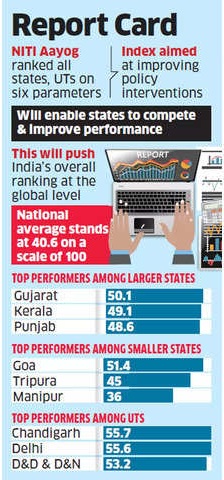900 319 0030
enquiry@shankarias.in
The weights attached to the six parameters of the index have skewed the rankings of States and need to be reworked.

References